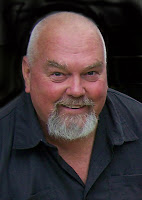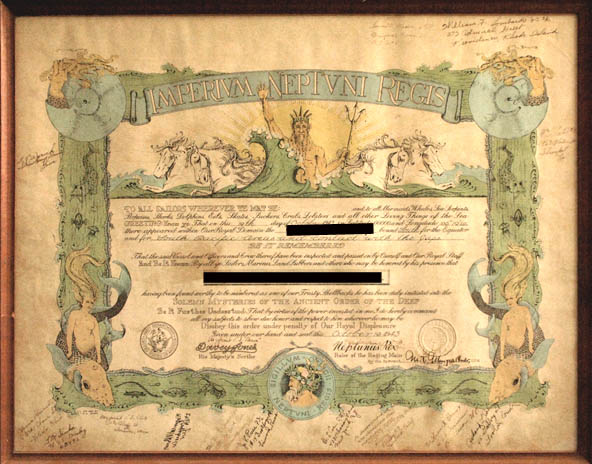Veterans Day Remembrance of my father, John Lawrence Fanning Jr. March 18th, 1929 to December 3rd, 1951. United States Navy.
As a teenager during World War II my father was gung-ho to join the service and fight for his country. At age 17 he secured consent from his parents, John Lawrence Fanning and Margaret Fanning to enlist in the U. S. Navy.
Because of his young death at age 21 and the bitter dissolution of the two families, maternal and paternal I never really knew my father (being three months old when he perished attempting to rescue a fellow sailor). It would be many years after his death before I discovered there was another branch of my family and nearly half a lifetime before contact was reestablished due to the complexities of life, time and distance.
John Lawrence Fanning Jr. affectionately known within his family and close circle of friends as King, enlisted in the U. S. Navy in 1946 at 17 years old. Part of the following are some of his words and photographs from that timeframe. My deepest thanks to West Coast cousins Larry and Jackie Pearson for saving the photographs and letters and routing them to me.
Recruitment and Enlisting:
This brochure, produced for the Secretary of the US Navy was put out during recruitment for WW II. I'm certain my father was familiar with it as a mid-year teen longing to join the service during this engagement:
"Enlisted men are the backbone of the Navy. They are real heroes, who ask for nothing greater than the chance to help win the war — and the opportunity to show they've got the stuff to do it. To these men of action — men who join the Navy to serve their flag and country, regardless of grade or rank —this booklet is dedicated."
Secretary of the Navy
While I don’t know the exact date or details it wasn’t long after his birthday in 1946 that my father entered the service as a raw recruit. While the official date for the ending of WW II is August 15, 1945, a wave of post-war enlistees, immediately in the wake of the war are still considered by US Navy as veterans of WW II. My father fell into this category (see military headstone above).
Guantanamo Bay, Cuba, US Navy Base
My father’s letter to home, dated February 22nd, 1947 mentions debarking from the US Naval base at Guantánamo, Cuba. My historical research for this post shows that during the Spanish-American War, the U.S. fleet attacking Santiago retreated to Guantánamo's harbor to ride out the summer hurricane season of 1898. The Marines landed with naval support, requiring Cuban scouts to push off Spanish resistance that increased as they moved inland. This area became the location of U.S. Naval Station Guantanamo Bay, which covers about 45 square miles and is sometimes abbreviated as "GTMO" or "Gitmo".

By the end of the Spanish-American War, the U.S. government had obtained control of all of Cuba from Spain. Tomás Estrada Palma, the first President of Cuba gave the United States a perpetual lease for the area around Guantánamo Bay in 1903. The Cuban-American Treaty gave, among other things, the Republic of Cuba ultimate sovereignty over Guantánamo Bay while granting the United States "complete jurisdiction and control" of the area for coaling and naval stations. The base was an important intermediate distribution point for World War II merchant shipping convoys from New York City and Key West, Florida, to the Panama Canal and the islands of Puerto Rico, Jamaica, and Trinidad. I’ll not go into contemporary history of the area as it does not affect this story.
In 1947 new recruit J. L. Fanning Jr. found himself in gunnery practice at the US Naval base in Guantanamo Bay. The following are two photographs he took of one of the ‘dry-land, ships gunnery practices.
The Vessel - USS EUGENE A. GREENE (DD-711)
DD-711 General Specifications Class: Gearing-class destroyer
Named for: Ensign Eugene A. Greene (1921-1942)
- Complement: 336 Officers and Enlisted
- Displacement: 3460 tons
- Length: 390 feet 6 inches
- Beam: 40 feet 10 inches
- Flank Speed: 35 knots
- Range: 4 500 Nautical Miles
At Sea - The Atlantic Ocean
 Ports of Call my father noted were:
Ports of Call my father noted were:
Naval Station Norfolk, in Norfolk, Virginia, supports naval forces in the Atlantic Ocean, Mediterranean Sea, and Indian Ocean. It is the world's largest Naval Station, supporting 75 ships and 134 aircraft alongside 14 piers and 11 aircraft hangars, and houses the largest concentration of U.S. Navy forces.
Trinidad, the larger and more populous of the two major islands and numerous landforms which make up the island nation of Trinidad and Tobago. It is the southernmost island in the Caribbean and lies just 6.8 miles off the northeastern coast of Venezuela.
Rio de Janeiro (River of January), commonly referred to simply as Rio, is the capital city of the State of Rio de Janeiro, the second largest city of Brazilwith 6.3 million people, and the third largest metropolitan area in South America.
Montevideo is the largest city, the capital, and the chief port of Uruguay.
At sea, February 20th, 1947. "I'm a 'Shellback' now." Seaman Fanning wrote home.
The ceremony of Crossing the Line is an initiation rite in the Royal Navy, U.S. Navy, U.S. Coast Guard, U.S. Marine Corps, and other navies that commemorates a sailor's first crossing of the Equator. This tradition is an event no sailor forgets. Those inducted into the "mysteries of the deep" by Neptunus Rex and his Royal court, count the experience as a highlight of their naval career. Neptunus Rex's party may and usually will include Davy Jones, Neptune's first assistant, Her Highness Amphitrite, and a long list of characters limited only by the veteran members imagination. Sailors who have crossed the Equator are nicknamed (Trusty) Shellbacks, often referred to as Sons of Neptune; those who have not are nicknamed (Slimy) Pollywogs.
Here is a sample certificate of completion of the Shellback Initiation from the 1940's I found on-line:
Mission of Good Will:
USS EUGENE A. GREENE (DD-711) - a Gearing-class destroyer, operated along the east coast and in the Caribbean acting as plane guard for pilots in carrier operations. From her home port in Norfolk she sailed to Guantanamo Bay for training early in 1947 and on 13 February sailed in a task group bound for Montevideo Uruguay to participate in the festivities accompanying the inauguration of Uruguay's president. The group also paid a good will visit to Rio de Janeiro before returning to Norfolk, 31 March.
1951:
Fast forward four years. Little did my family know it but 1951 was to be a year of big changes. My 18 year old mother and 21 year old father get married. About nine months into the year I am born on September 4th and in between the Thanksgiving and Christmas holidays my father dies tragically at a very young age. Indeed a year of changes…
November 28th, 1951, just after dark, my father is driving a loaded truck with two Navy buddies as passengers. A drunk driver swerves into a corner striking and overturning the truck in a terrible crash. The accident and the resulting account were witnessed by a taxi driver and his fare traveling the same route. My father thrown clear of the wreckage appears to have only scrapes and bruises. One of the passengers climbs out of the truck dazed from the impact but the other fellow is trapped. Realizing the situation my father attempts to rescue his trapped buddy. During the impact the fuel tank of the truck had ruptured and during the rescue attempt the battery shorted, sparked and ignited the pool of gasoline. My father and his trapped buddy were engulfed in a ball of fire. The trapped passenger died on scene. My father survived a week and died in intensive care in the hospital December 3rd, 1951. I was one day short of three months old. As a result of this terrible occurrence the paternal and maternal sides of my family fell into grief, despair, anger and confusion. There was an emotional explosion that severed the family and spun us off in different directions, parts of which would never reunite.

FOOTNOTE:
Looking back over the years, I realize that coming to terms with the death of my father and it's subsequent family aftermath has been a life long process for me. Throughout the early years of my life the subject was taboo for various reasons - children learn these lessons well, sometimes too well. In the 70's I was too busy building my own life and simply let the status quo stand. In the mid 1980's I connected with the West Coast branch of my family (my father's sister, Aunt Pat had married and moved west to raise her family there). God bless them all I was received with open arms. Later I traveled back to the East Coast and met with my Grandmother and two other Aunts. It was a wonderful reconnecting but my Grandfather had died and I deeply regret to this day not reuniting with him. Time, distance, economics, and unfortunately patterns of life, have been a challenge to staying in touch.
Although born John Lawrence Fanning III, I grew up with the name John L. Foster. In the 1990's I legally changed my name to J. Foster Fanning, honoring both my blood father and my step-father. Shortly there after my son changed his family name from Foster to Fanning in honor of his Grandfather who lost his life trying to save a friend and fellow serviceman.
WHAT GOES AROUND COMES AROUND:
My half brother Rick died in a car crash when he was a young man leaving a son and daughter behind. Once again, although under differing circumstance (mostly economical) there was a family estrangement occurring. Several years later in coming to terms with what was happening I stepped in and managed to bring the
teenage children of my half-brother back into contact with my mother and other brothers. Fortunately we have remained in contact to this day...

















































